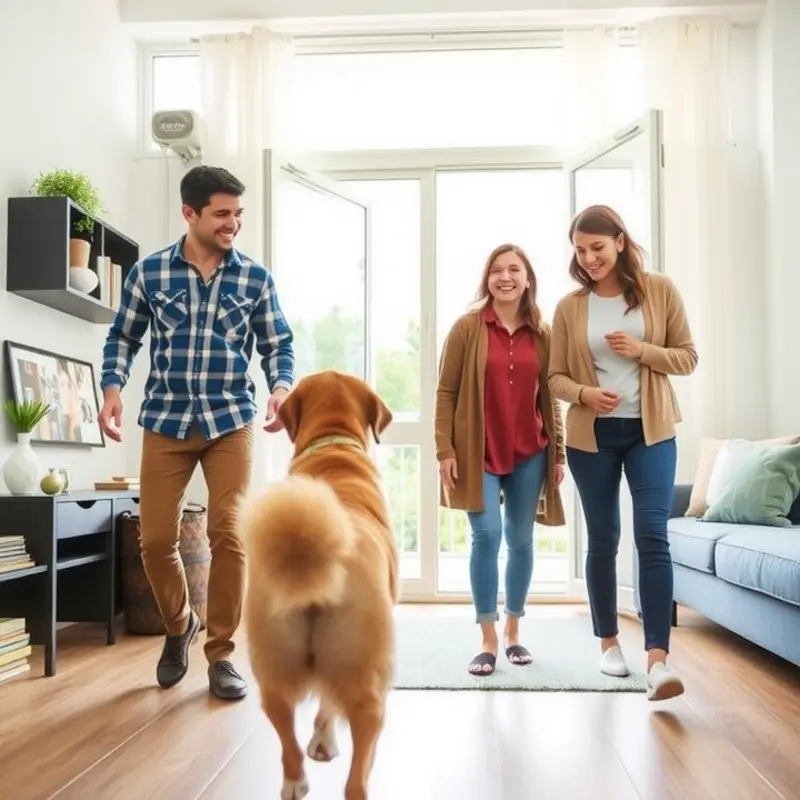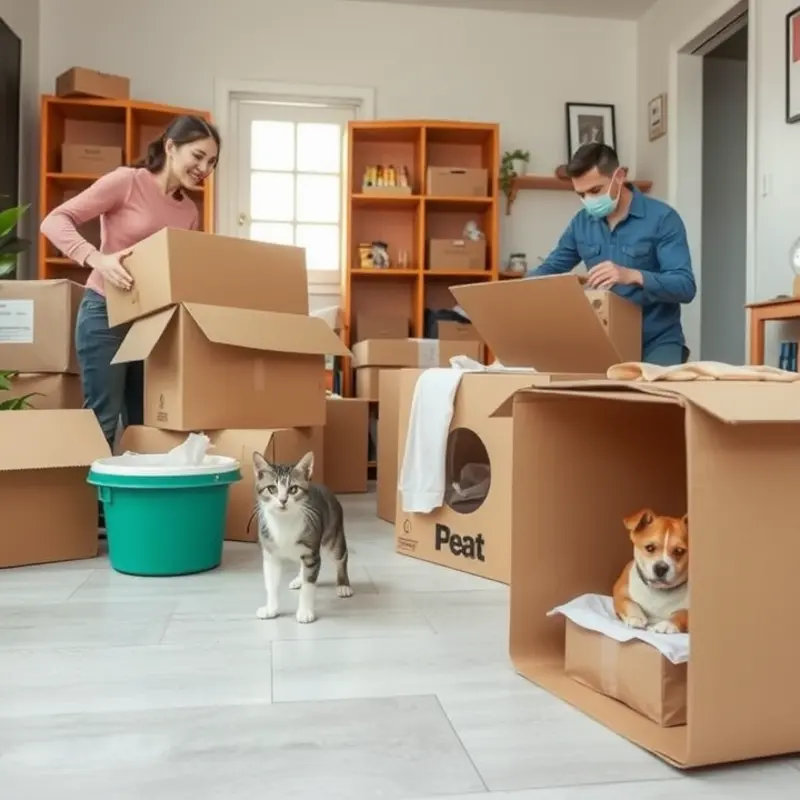Moving to a new home is an exciting adventure, especially for families with pets. This journey, however, can be stressful for our beloved companions who thrive on routine and familiarity. By planning ahead and incorporating some pet-friendly strategies, you can create a safe, comfortable, and supportive environment for both your pets and children during the transition. Whether you’re relocating to a new city or just a new neighborhood, understanding how to make the moving process as smooth as possible for your furry family members is crucial. Follow our tailored tips that address the unique challenges of moving with pets, ensuring a harmonious experience for everyone involved. From selecting the right pet-friendly apartment to settling in comfortably once you arrive, this guide will arm you with practical advice to make moving day a breeze for both you and your pets.
Choosing a Pet-Friendly Apartment

Finding a comfortable, pet-friendly apartment involves more than just locating a rental that permits animals. To ensure a smooth transition for both your family and furry friends, you’ll need to consider several key factors. Below, we delve into what to look for in terms of policies, space requirements, and neighborhood features.
First, review the pet policies of potential apartments carefully. Many landlords have specific rules about the types and numbers of pets allowed. Some may have restrictions based on breed or size, while others might limit the number of pets you can have in one unit. Pet-friendly apartments often require a pet deposit or charge monthly pet rent. Clarifying these policies upfront will help you avoid any unwanted surprises or additional costs.
Once policies are clear, assess the space requirements your pets might need. Different animals have varying needs when it comes to living space. Dogs, especially larger breeds, often require more room to roam. Consider apartments with extra square footage or access to balconies or patios that can serve as additional play areas. For cats, ensure the space provides nooks and perches, allowing them to explore vertically as well.
Next, pay attention to the apartment’s layout. Open and uncluttered floor plans are optimal for pets, reducing the chance of accidents and giving them freedom to move around. An extra room or a den can be dedicated as a pet area, offering a safe retreat for pets to relax when they’re feeling overwhelmed. Additionally, look for apartments with durable flooring like tile or hardwood, which are easier to clean than carpets.
Beyond the apartment itself, consider neighborhood features that can enhance your pets’ well-being. Proximity to parks, pet-friendly coffee shops, or walking trails can make daily routines more enjoyable. Research the surrounding area for pet-friendly amenities such as grooming services, veterinary clinics, and pet supply stores. The more accessible these features are, the easier it will be to integrate your pet into the community.
Furthermore, evaluate the safety and security of the apartment complex. Features like secure entry systems and enclosed gardens or courtyards can give you peace of mind. If the apartment building has gates or other security measures, be sure to verify they are pet-safe to prevent accidental escapes or intrusions. Here is a helpful guide on ensuring gate safety.
Lastly, engage with the community. Speaking with neighbors, particularly those with pets, can provide insights into the real experience of living in that complex. They can share valuable information about the management’s attitude towards residents with pets and any hidden challenges you might face.
Securing a pet-friendly apartment that suits both your family’s and your pet’s needs requires diligence and research. Approaching this transition with a checklist of essential features ensures both your household members and your furry companions settle comfortably and happily into their new home.
Making Moving Day Stress-Free for Pets

Packing up your life and moving to a new place is a major event for everyone in the family, including your pets. They thrive on routine and familiar environments, and moving day can disrupt their sense of security. To ease the transition, it’s crucial to minimize stress and maintain a comfortable atmosphere for your furry friends.
Start by organizing a pet-friendly moving checklist. Prepare a bag with essentials such as food, bowls, toys, and any medications your pets might need. Include comfort items like their favorite blanket or bed. This will ensure you have everything on hand, reducing last-minute scrambles.
Designate a safe space for your pets where they can stay during the hustle and bustle. This could be a quiet room in your home where they feel secure. Place their belongings inside to create a soothing environment that buffers the noise and activity of moving day.
On the morning of the move, keep your pets’ routine as normal as possible. Feed them at their regular times and give them bathroom breaks. Pets are reassured by predictability, which helps in keeping them calm.
If possible, enlist the help of a friend or family member to pet-sit. Alternatively, consider a professional pet daycare. This temporary arrangement can protect your pets from the chaos, making the transition smoother for everyone involved.
During the move, ensure that your pets are safely secured. If driving, use a pet carrier or harness to ensure their safety in the vehicle. For larger animals, a pet barrier can provide a safe space within the car while preventing distractions during travel.
It’s essential to update your contact information on your pets’ ID tags and microchips before the move. Should they escape during the chaos, having the correct details increases the chances of speedy recovery.
Once you arrive at your new home, immediately set up a designated area with familiar items from the old house. This will serve as their initial comfort zone. Gradually introduce them to the rest of the home once they show signs of relaxation.
Engage in familiar activities and routines as soon as you can. Walk your dog or play with your cat, maintaining their everyday habits to foster a sense of normalcy. Consistency reassures them that everything is okay and helps them acclimate to new surroundings.
For families with exotic pets, the situation may require additional considerations. For more detailed information on housing these unique family members, consider reviewing this guide on renting apartments with exotic pets.
Moving with pets doesn’t have to be a stressful experience. By carefully planning and considering their needs, you can create a seamless transition that ensures your pets remain happy and healthy during this significant change in their lives.
Final words
Navigating a move with pets requires thoughtful planning and care, but with the right strategies in place, the transition can be enjoyable for everyone. By carefully selecting a pet-friendly apartment and taking steps to minimize stress on moving day, you can ensure your furry friends feel supported and loved throughout the process. Remember, your pets are members of your family, and their comfort should be a priority as you embark on this new journey together. With these tips, your move can be smooth, setting the stage for new memories in a place everyone can thrive.









